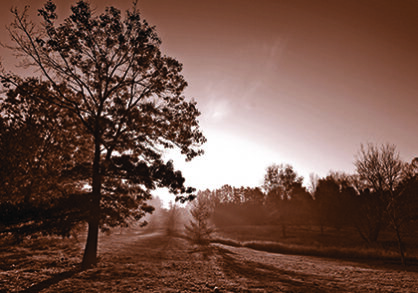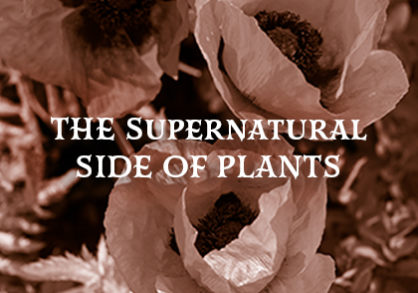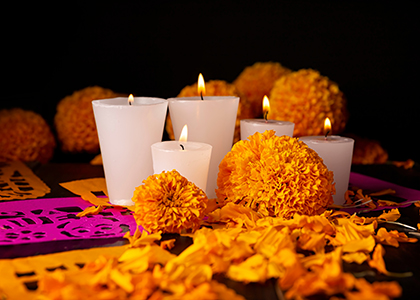
This time of year is marked by a noticeable seasonal shift. Cool, crisp days fully replace warm summer temperatures. The hours of daylight steadily decrease following the fall equinox, and plant life prepares for winter after harvest season. During this time of seasonal transition, many cultures believe the barrier separating the physical world from the spirit world is weakest. Spirits and ancestors come closer to the living, offering an opportunity for communication and connection.
Plants traditionally play a role in both honoring the dead and thinning the veil between the earthly and spiritual realms. In some cultures, these traditions center around Halloween (October 31). Three of these plants thrive in Cornell Botanic Gardens’ plant collections on this very day. Might they help earthly beings into contact with those beyond? Perhaps. Here are their stories.
Marigold (Tagetes sp.)
The marigold is an iconic flower of Día de los Muertos, or Day of the Dead. This celebration dates to ancient Mesoamerican cultures, particularly the Aztecs, who believed that the souls of the deceased returned to the world of the living during this time. The Aztecs practiced rituals involving offerings of food, flowers, and incense to the deceased to ensure their spiritual well-being.
Today, altars, or ofrendas, are central to the celebration of Día de los Muertos, which takes place on November 1 and 2. Marigolds are often arranged in intricate patterns or scattered around photographs and favorite foods of the departed, creating a vibrant and inviting space.
Bright orange and yellow varieties of marigold represent the sun and the cycle of life and death. Their fragrance is thought to lead souls from their burial places to the alters in their family homes.
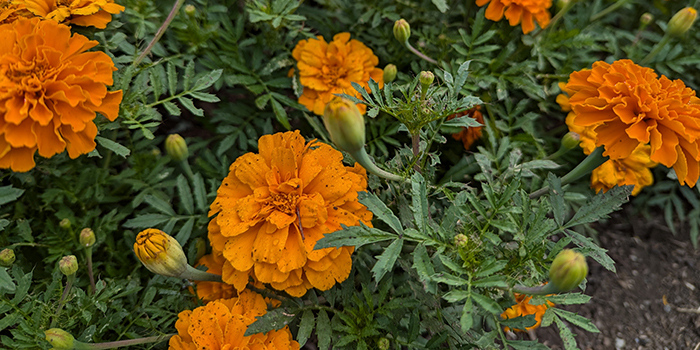
There are about a dozen varieties of plants in the genus Tagetes, or marigold, in the “dye bed” within the Robison Herb Garden. The marigold is often called cempasúchil in Mexico.
Mugwort (Artemisia vulgaris)
Today’s Halloween traditions trace their roots to the British Isles and Ireland where ancient Celtic, and possibly pre-Celtic people, celebrated a festival known as Samhain (pronounced sah-win). Plants used to communicate with the spirit world during this time include mugwort. Its fragrant smoke is thought to cleanse spaces and create a sacred atmosphere, inviting positive energies and honoring ancestors.
Using the leaves and stems of mugwort to make tea has been known to facilitate a deeper state of REM sleep, prompting vivid dreams and enhancing dream recall. This opens up the opportunity for ancestors to communicate in this dream state.
Mugwort is also used as a sacred plant in many Himalayan and Buddhist traditions. It is placed on altars to honor the Buddha and other deities or burned in incense to create a sacred space for meditation and prayer.
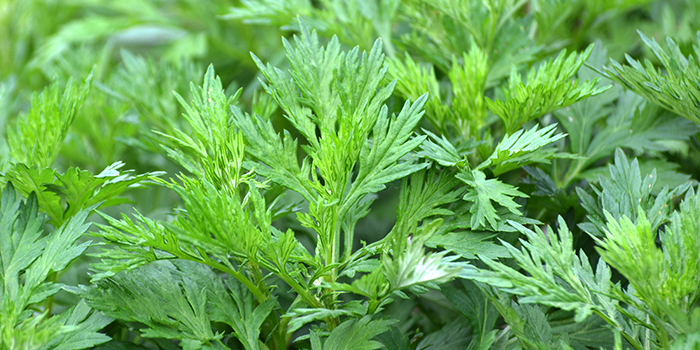
Tobacco (Nicotiana rustica)
For many Indigenous peoples, especially in North America, tobacco holds profound cultural importance and is considered a sacred gift. Its use is often accompanied by specific protocols and teachings passed down from generation to generation.
According to the Hodinohsó:ni Confederacy, an alliance of six sovereign nations in New York State, tobacco is a gift from the Sky World, where the Great Spirit or Creator lived. Tobacco maintains the connection to the Sky World by conveying the intentions and messages of the living community. It is often used in ceremonies and offerings to express gratitude and seek from the spirit world or the Creator.
Tobacco also embodies the Hodinohsó:ni values of reciprocity, respect for nature, and the interconnectedness of all beings. It is considered a medicine that is used in specific ways to promote physical, spiritual, emotional, and community well-being.
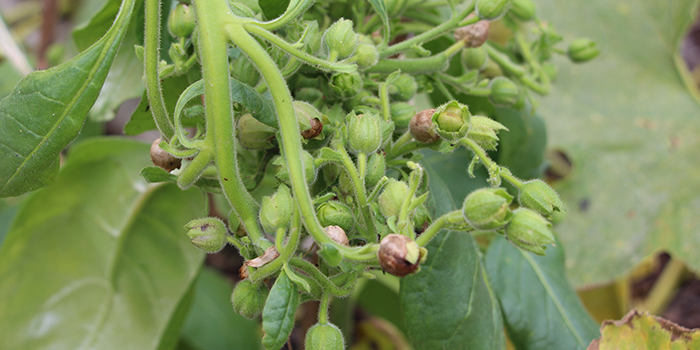
Cornell University is located on the traditional homelands of the Gayogo̱hó:nǫɁ (the Cayuga Nation). The Gayogo̱hó:nǫɁ are members of the Hodinohsó:ni Confederacy, an alliance of six sovereign nations with a historic and contemporary presence on this land. The confederacy precedes the establishment of Cornell University, New York state and the United States of America. We acknowledge the painful history of Gayogo̱hó:nǫɁ dispossession, and honor the ongoing connection of Gayogo̱hó:nǫɁ people, past and present, to these lands and waters.
A Touch of Plant Magic
Stories of three plants associated with the origins and traditions of Halloween
The Supernatural Side of Plants
Steeped in legends and lore, herbs provide a physical link to the beliefs and practices of people through the ages.
Floral wedding traditions around the world
A short walk around Cornell Botanic Gardens in August unveils a diversity of blooms included in wedding ceremonies around the world.
